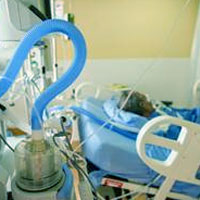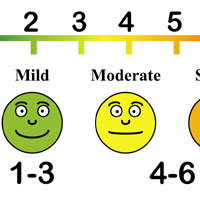Tag: ICU

NHS ICUs Sending Patients Elsewhere Due to Lack of Beds
Six in ten UK ICUs cannot function normally because they are so short of nurses, a survey has found. Patients whose lives are at risk are being turned away from their local hospitals because of a lack of intensive care beds,... read more

Lack of Association of High Backrest With Sacral Tissue Changes in Adults Receiving Mechanical Ventilation
Although higher backrest elevation may be a theoretical risk for integrity of sacral tissues, few data support use of high backrest elevation. Level of backrest elevation is not associated with changes in tissue integrity.... read more

Critical Burn Patients in the ED/ICU
Dr. Djogovic completed training in Emergency Medicine and Critical Care Medicine from 1999-2005, and is currently employed at the University of Alberta Hospital as an Emergency Physician, and as an Intensivist in the General... read more

Noninvasive Ventilation in Patients With Do-Not-Intubate and Comfort-Measures-Only Orders
A large proportion of patients with do-not-intubate orders who received noninvasive ventilation survived to hospital discharge and at 1 year, with limited data showing no decrease in quality of life in survivors. Provision... read more

Survival and Safety Outcomes of ICU Patients Discharged Directly Home
Recruited discharged directly to home patients experienced very good 8-week postdischarge outcomes with 0% mortality and a low rate of ICU readmission (1%) or ward readmission (4%), but not an insignificant rate of emergency... read more

Too Much SALT on the ICU?
There has a been a little flutter of activity in the #FOAMed world this week about two trials published in the NEJM on the subject of balanced fluids in the care of critically ill patients, and also on admitted patients in... read more

Association Between Continuous Hyperosmolar Therapy and Survival in Patients with TBI
Intracranial hypertension (ICH) is a major cause of death after traumatic brain injury (TBI). Continuous hyperosmolar therapy (CHT) has been proposed for the treatment of ICH, but its effectiveness is controversial. We compared... read more

The Life Cycle of Intensive Care Survivors
I started the Intensive care follow-up clinic to try to make sense of my work with critical patients and get feedback from their physical recovery. Over time, I verified that the patients presented not only physical effects,... read more

Haloperidol Prophylaxis in Critically Ill Patients with a High Risk for Delirium
The use of the delirium prevention protocol seems to result in improvement of several delirium outcome measures. Prophylactic treatment with low dose haloperidol in critically ill patients with a high risk of delirium likely... read more

Critical Care Pharmacists and Medication Management in an ICU Recovery Center
Many patients experience complications following critical illness; these are now widely referred to as post-intensive care syndrome (PICS). An interprofessional intensive care unit (ICU) recovery center (ICU-RC), also known... read more

Comparison of Self-Reported and Behavioral Pain Assessment Tools in Critically Ill Patients
Self-reported and behavioral pain assessment scales are often used interchangeably in critically ill patients due to fluctuations in mental status. The correlation between scales is not well elucidated. The purpose of this... read more

Pressure Injuries and Sedation: Are they related?
Critically ill patients inherently have most of the risk factors for the development of pressure injuries. One of the key factors is immobility, which is very frequent in ICUs. This lack of mobility is enhanced by the administration... read more

The Safety of a Novel Early Mobilization Protocol Conducted by ICU Physicians
There are numerous barriers to early mobilization (EM) in a resource-limited intensive care unit (ICU) without a specialized team or an EM culture, regarding patient stability while critically ill or in the presence of medical... read more
What Role Do Dogs Play in ICUs?
Dr. Megan Hosey PhD speaks about how dogs in the ICU can help lessen patients' pain & make them more hopeful. Getting people out of bed in intensive care units, even when they're being mechanically ventilated, is associated... read more








